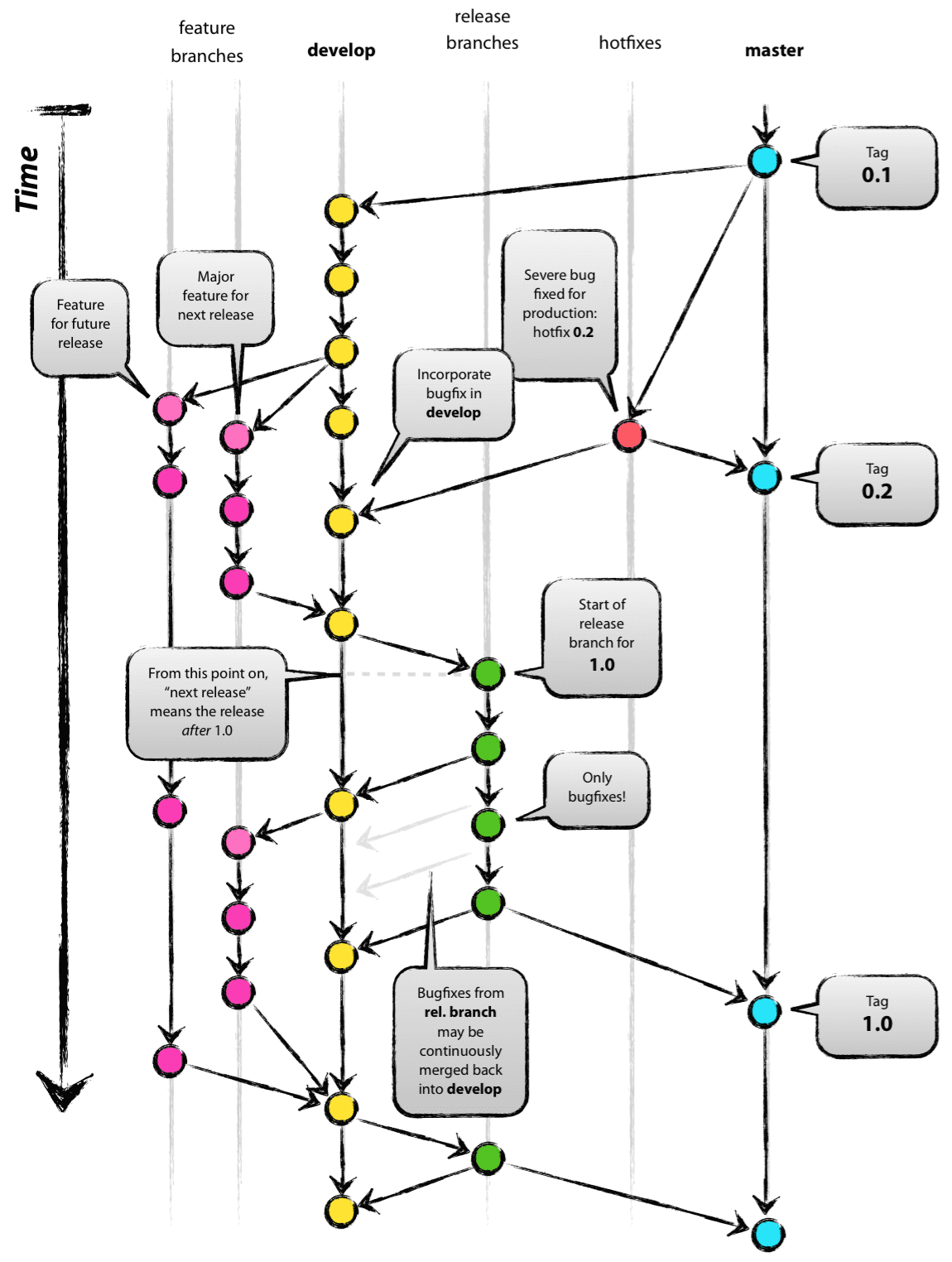Hi! We can't thank you enough for wanting to contribute; the community is what keeps the wheels moving on this awesome project. All we ask is that you follow some simple guidelines. The roots of these guidelines stem from the developer community and the actual document has been borrowed from Microsoft's DscResources repository; they did an excellent job putting these guidelines together; why reinvent the wheel?
We are working on more detailed instructions that outline the basics.
GitHub fosters collaboration through the notion of pull requests. On GitHub, anyone can fork an existing repository into their own branch where they can make private changes to the original repository. To contribute these changes back into the original repository, a user simply creates a pull request in order to "request" that the changes be taken "upstream".
-
Always create pull requests to the
devbranch of a repository. For more information, learn about the branch structure that we are using. -
When you create a pull request, fill out the description with a summary of what's included in your changes. If the changes are related to an existing GitHub issue, please reference the issue in your description.
-
Once the PR is submitted, we will review your code
-
Once the code review is done, and all merge conflicts are resolved, a maintainer will merge your changes.
One of the easiest ways to contribute to a PowerShell project is by helping to write and edit documentation. All of our documentation hosted on GitHub is written using GitHub Flavored Markdown
We are at lest working on shifting things over to GFM, for 'core' documentation. Some things may still live on the GitHub wiki, but using GFM allows the documentation to exist in the repo, so you always have a local copy to reference ;)
To edit an existing file, simply navigate to it and click the "Edit" button. GitHub will automatically create your own fork of our repository where you can make your changes. Once you're finished, save your edits and submit a pull request to get your changes merged upstream.
If you want to contribute new documentation, first check for issues tagged as "Documentation" to make sure you're not duplicating efforts. If no one seems to be working on what you have planned:
- Open a new issue tagged as "Documentation" to tell others what you're working on
- Create a fork of our repository and start adding new Markdown-based documentation to it
- When you're ready to contribute your documentation, submit a pull request to the dev branch
All of the articles in this repository use GitHub Flavored Markdown (GFM).
If you are looking for a good editor, try Markdown Pad or GitHub also provides a web interface for Markdown editing with syntax highlighting and the ability to preview changes.
Some of the more basic GFM syntax includes:
- Line breaks vs. paragraphs: In Markdown there is no HTML
<br />or<p />element. Instead, a new paragraph is designated by an empty line between two blocks of text. (Note: Please add a single newline after each sentence to simplify the command-line output of diffs and history.) It will simplify diffs and history. - Italics: The HTML
<em>some text</em>is written as*some text* - Bold: The HTML
<strong>some text</strong>element is written as**some text** - Headings: HTML headings are designated using
#characters at the start of the line. The number of#characters corresponds to the hierarchical level of the heading (for example,#=<h1>and###=<h3>). - Numbered lists: To make a numbered (ordered) list start the line with
1.. If you want multiple elements within a single list element, format your list as follows:
1. For the first element (like this one), insert a tab stop after the 1.
To include a second element (like this one), insert a line break after the first and align indentations.
to get this output:
-
For the first element (like this one), insert a tab stop after the 1.
To include a second element (like this one), insert a line break after the first and align indentations.
- Bulleted lists: Bulleted (unordered) lists are almost identical to ordered lists except that the
1.is replaced with either*,-, or+. Multiple element lists work the same way as with ordered lists. - Links: The syntax for a hyperlink is
[visible link text](link url). Links can also have references, which will be discussed in the "Link and Image References" section below.
We are in the process of adding/consolidating more detailed documentation around this.
We are in the process of adding/consolidating more detailed documentation around this. In the meantime, you can review the documentation that we do have inside the README.md file for the repo.
To join in discussions or ask questions, join the #vCheck channel on VMware Code Slack Team.
When contributing to this repository, please follow the following guidelines:
- For all indentation, use 4 spaces instead of tab stops
- Make sure all files are encoding using UTF-8.
- When writing Markdown, if a paragraph includes more than one setence, end each sentence with a newline.
GitHub will still render the sentences as a single paragraph, but the readability of
git diffwill be greatly improved.
We are using a git flow model for development.
We recommend that you create local working branches that target a specific scope of change.
Each branch should be limited to a single feature/bugfix both to streamline workflows and reduce the possibility of merge conflicts.
